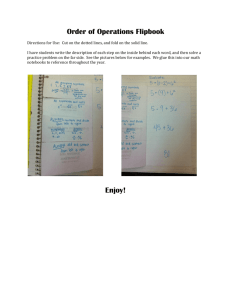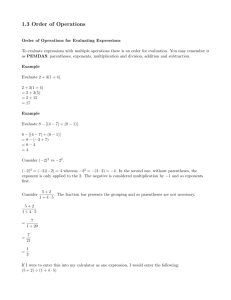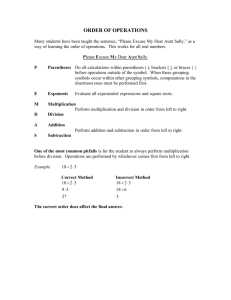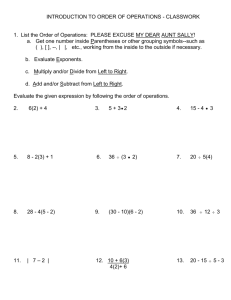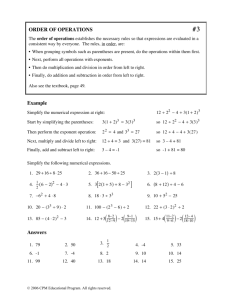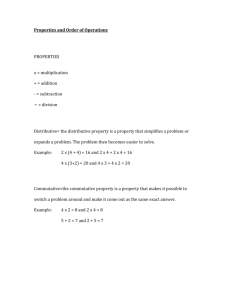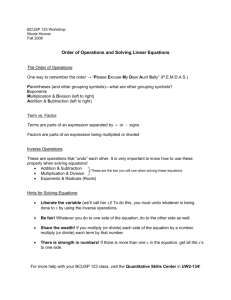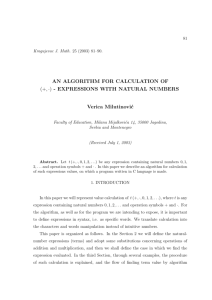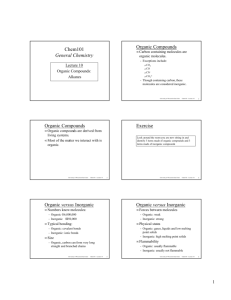Grouping Symbols and Order of Operations
advertisement
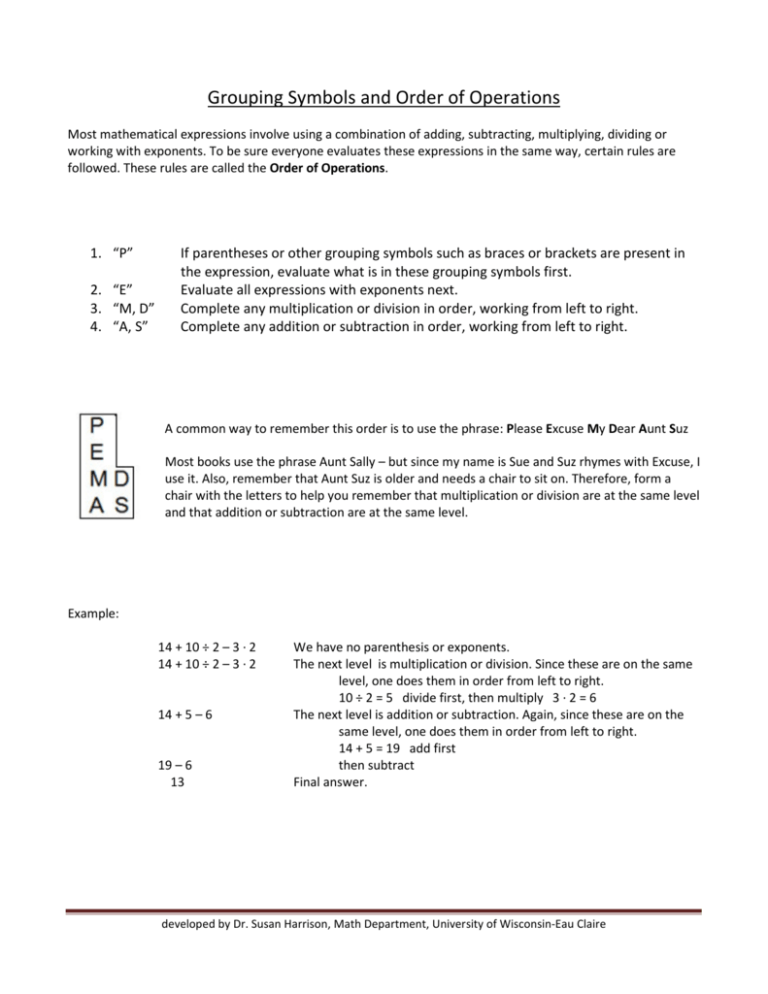
Grouping Symbols and Order of Operations
Most mathematical expressions involve using a combination of adding, subtracting, multiplying, dividing or
working with exponents. To be sure everyone evaluates these expressions in the same way, certain rules are
followed. These rules are called the Order of Operations.
1. “P”
2. “E”
3. “M, D”
4. “A, S”
If parentheses or other grouping symbols such as braces or brackets are present in
the expression, evaluate what is in these grouping symbols first.
Evaluate all expressions with exponents next.
Complete any multiplication or division in order, working from left to right.
Complete any addition or subtraction in order, working from left to right.
A common way to remember this order is to use the phrase: Please Excuse My Dear Aunt Suz
Most books use the phrase Aunt Sally – but since my name is Sue and Suz rhymes with Excuse, I
use it. Also, remember that Aunt Suz is older and needs a chair to sit on. Therefore, form a
chair with the letters to help you remember that multiplication or division are at the same level
and that addition or subtraction are at the same level.
Example:
14 + 10 ÷ 2 – 3 ∙ 2
14 + 10 ÷ 2 – 3 ∙ 2
14 + 5 – 6
19 – 6
13
We have no parenthesis or exponents.
The next level is multiplication or division. Since these are on the same
level, one does them in order from left to right.
10 ÷ 2 = 5 divide first, then multiply 3 ∙ 2 = 6
The next level is addition or subtraction. Again, since these are on the
same level, one does them in order from left to right.
14 + 5 = 19 add first
then subtract
Final answer.
developed by Dr. Susan Harrison, Math Department, University of Wisconsin-Eau Claire
Example:
23 + 6 ( 12 - 7 )
23 + 6 ( 5 )
8 +6(5)
8 + 30
38
TRY:
Evaluate inside the ( ) first: 12 - 7 = 5
Evaluate the expression with the exponent: 23 = 2 ∙ 2 ∙ 2 = 8
Complete the multiplication: 6 ( 5 ) = 30
When a number is immediately in front of a bracket,
one multiplies that number with what is in the bracket.
The multiplication symbol is understood.
Complete the addition: 8 + 30 = 38
Final answer.
3 ( 5 - 1) + 52 =
10 – 3 { 4 [ 3 – ( 2 – 1 ) ] – 2 ( 2 + 1 ) } =
14 - 8 ÷ 2 ∙ 3 =
Properly following the rules for Order of Operations is absolutely necessary for being
successful with math! Please be sure you understand them and follow them.
developed by Dr. Susan Harrison, Math Department, University of Wisconsin-Eau Claire
